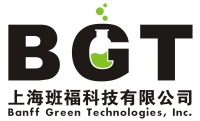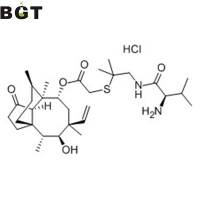What is Valnemulin Hydrochloride?
Valnemulin Hydrochloride is a new generation of pleuromutilin semisynthetic antibiotics. It belongs to Two terpene. The structure is tricyclic rigid. One of its important character is that it has octatomic ring.
Key applications of Valnemulin Hydrochloride
Valnemulin Hydrochloride is an antibiotic for animals. It is used as the cure for mycoplasmosis and gram-positive bacterium infection of swine, cattle, sheep and poultry. In 1999, European Economic Community authorized Valnemulin Hydrochloride to be used as the prevention and cure for swine dysentery caused by Brachyspira hyodysenteriae infection and porcine enzootic pneumonia caused by mycoplasma pneumonia infection. This is because mycoplasma is sensitive to Valnemulin. Valnemulin was the first veterinary drug premix certified by the whole Europe as a prescription for animals.
In January, 2004, Valnemulin was approved by European Economic Community to be used as the prevention against swine colonic spirochetosis caused by Brachyspira pilosicoli infection.
When applied with antibiotics that could combine with bacteria ribosome 50S subunit (lincocin, erythromycin, tylosin, etc.), Valnemulin works as a rivalry.
Valnemulin’s anti-bacteria mechanism
By combination with the 50S subunit of the pathogenic microorganism ribosome, Valnemulin restrains the synthesis of protein. Specifically, by the interaction with the V zone of 23S RNA, the pathogenic microorganism ribosome, Valnemulin prevents the peptidyl transferase to accurately fix position on the CCA end of tRNA, and furthermore restrains the synthesis of pathogenic microorganism protein, causing its death. Valnemulin mainly inhibits bacteria. When the concentration is high, it kills bacteria.
The effectiveness of Valnemulin as the cure of some bacteria
The minimum intracellular bacteriostatic concentration against Hei Lawson bacteria
Antimicrobia MIC 50 (µg/ml) MIC 90 (µg/m l) Range (µg/m l) Valnemulin ≤0.125 ≤0.125 ≤0.125
The minimum bacteriostatic concentration against 77 strains of brachyspira hyodysenteriae (With the comparison with Tiamulin)
Antibiotic MIC 50 (µg/ml) MIC 90 (µg/ml) Range (µg/ml)
Tiamulin 0.2 1.6 <0.1~13
Valnemulin <0.1 <0.1 <0.1~1.6
The minimum bacteriostatic concentration against 90 strains of Mycoplasma hyopneumoniae (With the comparison with Tiamulin)
Antimicrobial MIC 50 (µg/ml) MIC 90 (µg/ml) Range (µg/ml)
Tiamulin 0.06 0.125 0.03-0.125
Valnemulin 0.002 0.004 0.002-0.004
According to EMEA(2002), used as the prevention and cure of Swine enzootic pneumonia, 425~250mg/kg Valnemulin Hydrochloride helped the growth rate to rise by 6%~13%, the formula feed conversion rate to rise by 40%, the pulmonary lesions integration to reduce by 40%, and it decreases most injury.
Colonic bacteria with hairy short spiral is very sensitive to Valnemulin Hydrochloride. When the concentration is 25ug/mL, Valnemulin Hydrochloride is effective for the Treponema hyodysenteriae colitis caused by either artificial or natural infections. It also reduces the establishment of Colonic bacteria with hairy short spiral in the intestine. Moreover, it reduces the infected swine’s excretion of bacteria by 97%~100%, alleviates the clinical symptoms, and improve the weight and the formula feed conversion.
2 ug/mL Valnemulin Hydrochloride can obviously restrain the growth of Hei Lawson bacteria forstered externally. If applied by 75 or 125mg/kg formula feed, Valnemulin Hydrochloride will not completely eliminate the Hei Lawson bacteria within the body, but it could obviously relieve the clinical symptoms of proliferative enteritis, restrain the infection, control the diarrhea and ease the swine weight loss caused by proliferative enteritis.
Dose of Valnemulin Hydrochloride
For the prevention and cure of swine dysentery caused by spirochaeta dysenteriae, the dose of Valnemulin Hydrochloride is 75mg/kg formula feed for 7 days in succession for cure, and 25mg/kg formula feed for prevention. With this set of doses, at the final stage of the curation, the experimental swine showed no clinical sympton of any disease, and the growth rate and formula feed conversion rate are both normal. There is no adverse reaction shown.
Safety of Valnemulin Hydrochloride
Valnemulin Hydrochloride can be fast taken in by swine. The absorption rate is higher than 90%. Its concentration in the blood reaches maximum 1-4 hours after the medicine is taken. The half-life is 1.3-2.7 hours. There is a linear relationship between the blood concentration and the dosage. When taken repeatedly, Valnemulin Hydrochloride will mildly accumulate, but it will become steady within 5 hours. Taken by 5 mg/kg body weight, twice per day, the blood concentration stays steady for 7.5 days.
Valnemulin mainly stays in organs, especially in lungs and liver tissue. Taken by 15 mg/kg body weight, twice per day, four weeks in succession, Valnemulin’s concentration in the liver is 1.58ug/g, its concentration in the lung is 0.23ug/g, and its concentration in blood is lower than the detection value 2 hours after drug withdrawal.
Valnemulin is widely metabolized and excreted within swine bodies. The metabolin is fast excreted mainly in bile and excrement, so its residues in animals’s bodies are quite low. Ministry of Agriculture stipulates that the MRLs of Valnemulin in the swine mussel, liver, and kidney are 50、500、100μg/kg respectively. And according to EMEA(2002), the Valnemulin residues in the above-mentioned tissues are lower than the MRLs one day after the medicine is taken. Thus, the suggested withdrawal time for swine is one day.
Valnemulin’s classification in toxicology is low toxicity. Its resolution is rather complete, leaving hardly any environmental hazard. As a result, it is listed as a Category II New Drug in China.
Synthesis of Valnemulin hydrochloride
Valnemulin hydrochloride was synthesized by reaction from D-valine with methyl acetoacetate, anhydridisation with isobutyl chloroformate, amidation with [(2-amino-1, 1-dimethylethyl) thio] acetic acid (3aS, 4R, 5S, 6S, 8R, 9R, 9aR, 10R) -6-ethenyldecahydro-5-hydroxy-4,6,9,10-tetramethyl-1-oxo-3a,9-propano-3aH-cyclopentacycloocten-8-yl ester(5) followed by deprotection with hydrochloric acid. Compound 5 was prepared from pleuromutilin by tosylation and substitution with 1-amino-2-methylpropane-2-thiol hydrochloride. The overall yield was about 64% (based on pleuromutilin).
The Valnemulin premix is mainly made of its hydrochloride. The concentrations are 0.5%, 1%, 10%, 50%, etc. The Valnemulin premix with concentration of 0.5%, 1%, and 10% is diluted from the Valnemulin premix with concentration of 50%.












